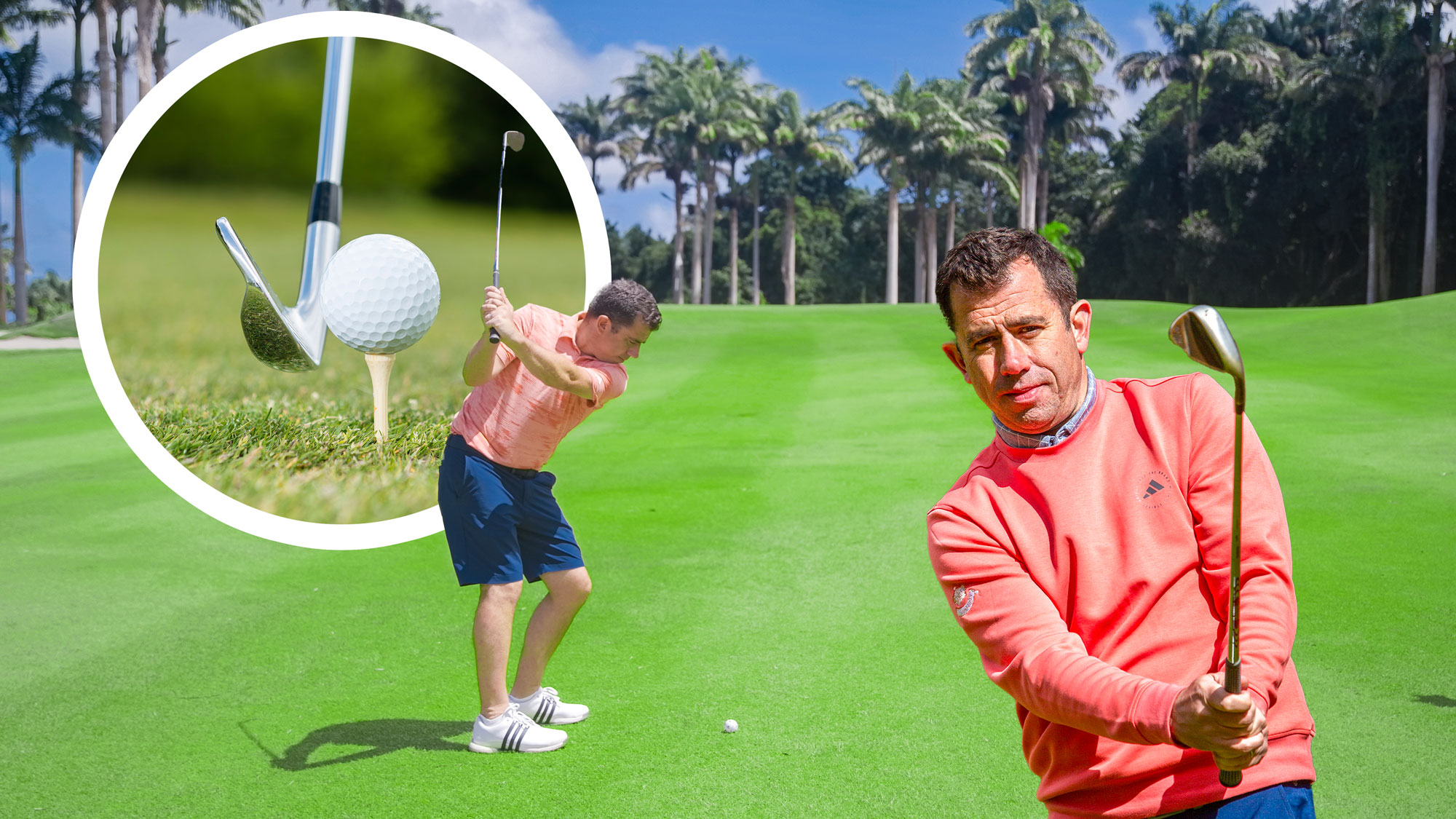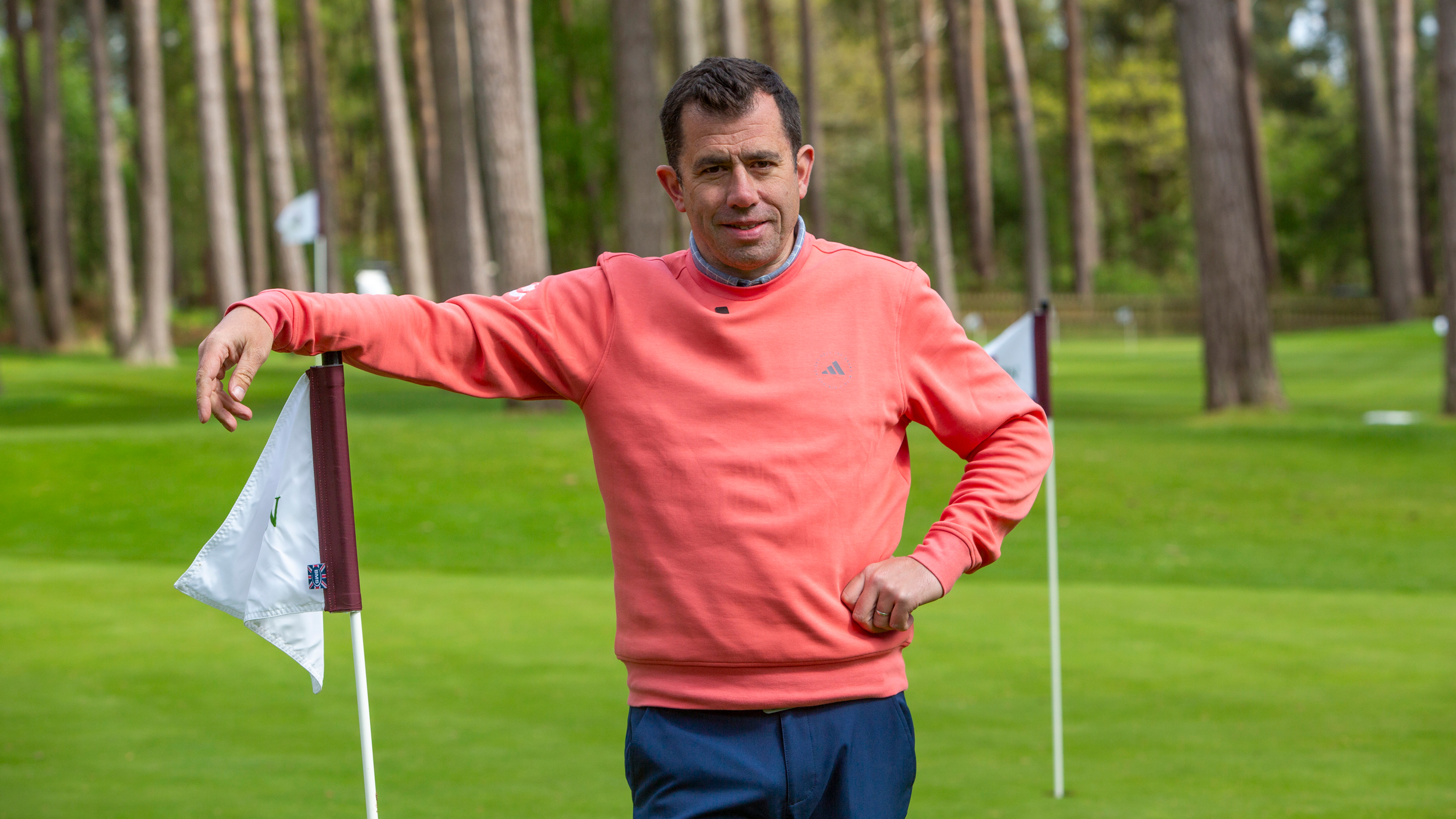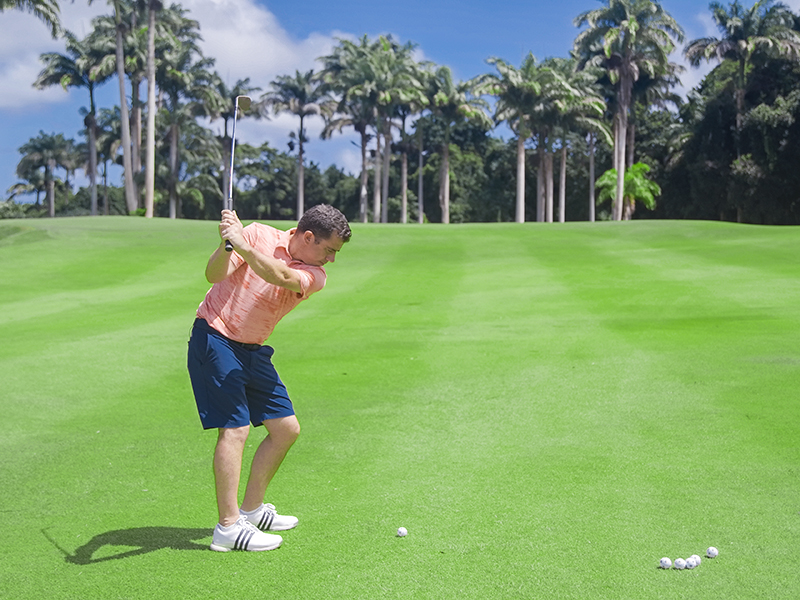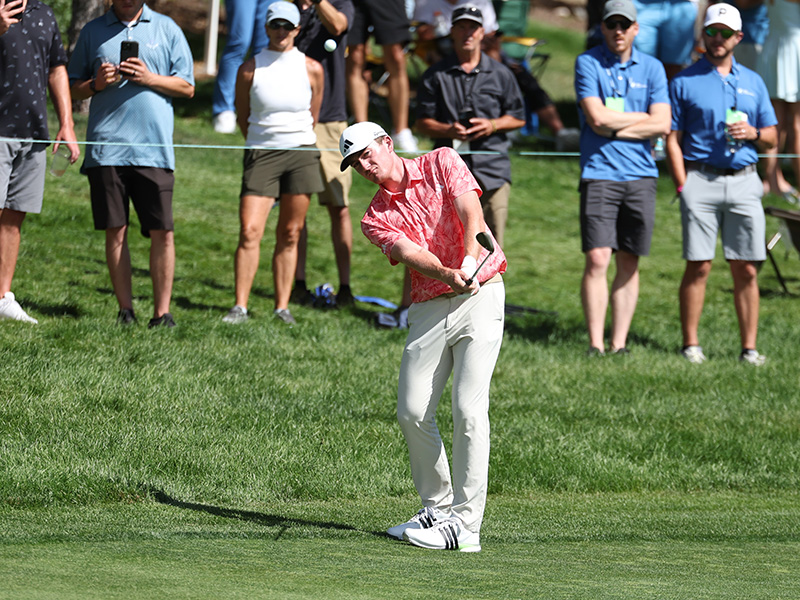Pitch Shots In Golf: Short Game Guru Dan Grieve Shares His Favourite Tips And Drills To Master Pitching
Hitting pitch shots in golf just became a lot easier thanks to PGA Master Pro Dan Grieve's super simple tips - including the short game guru's favourite drill

Baz Plummer

Pitch shots in golf are often the source of frustration and despair for plenty of amateurs, often stemming from a lack of understanding for how to hit a pitching wedge or poor setup fundamentals.
Similar to learning how to hit a bunker shot or how to chip in golf, the pitch shot is a crucial skill to create scoring opportunities but also to limit big numbers from destroying our scorecard.
In this video and article, short game guru Dan Grieve shares his top tips and expert drills to help you hit better pitch shots on the golf course...
What Is A Pitch Shot?
Golf Monthly Instruction Writer Barry Plummer says:
"A pitch shot is part of the short game family, usually played from inside 100-yards to the green. Many amateurs get confused about the difference between pitching and chipping, but the main difference is that for pitch shots the golf ball tends to spend more time in the air and is played from further away from the green.
"You might also notice more spin on your pitch shots, depending on your trajectory and club selection, which can be useful to create scoring opportunities on the green or get close to difficult pin positions. Having the best wedges in your bag, well-maintained with clean grooves, will also help.
"A pitch shot is an essential skill for any golfer to master, and while it might not be as sexy as the one stop and hop shot, it can yield great returns when executed successfully".
Subscribe to the Golf Monthly newsletter to stay up to date with all the latest tour news, equipment news, reviews, head-to-heads and buyer’s guides from our team of experienced experts.
Dan Grieve Short Game Series: The Secret To Pitching In Golf

Dan Grieve is one of the world's leading short game experts, having had considerable success with a collection of tour pros including Charley Hull and Georgia Hall, as well as improving the performances of countless amateurs. His short game school is the most attended in the UK, and his reputation in the short-game sphere is revered and well-respected.
Quick Tips For Hitting Better Pitch Shots
- Create a fixed point on your lead side by applying more pressure into your lead foot and keeping it there
- Maintain connection between triceps and rib cage throughout swing
- Rotate the chest around that fixed point
- Avoid lateral movement in the swing
- Vary your ball flights by experimenting with different lofts and releases
- For more spin, utilise the third and fourth groove on the clubface when striking the golf ball
Fundamentals Of Pitching
The reason most amateurs struggle with their short game is they are unsure if it falls in the long game or short game category. The awkward 30-60 yard shot can be difficult, but for me it's definitely in the short game family.
That means we need to create that firm, fixed point down our lead side, which we rotate around. This shot is still very much a rotational movement, meaning we don't want that side-to-side motion (weight transfer), which you would associate more with the full swing. This is a great golf tip for beginners, who often fall foul of unnecessary weight shift in their swing for this type of shot.
It's important to build connection into pitch shots. Firstly, you need to build connection with the ground by making sure you have that nice strong base. It's a narrower stance for pitching, but you want to feel like your weight is into your lead side and it's pushing down into the ground. That 'rooting' will help to prevent a lot of that lateral movement or swaying off the ball.
Secondly, I want you to work on this great drill to build connection in the upper body. Tuck your tee shirt sleeves under your armpit on both sides, and squeeze your upper arm against your rib cage to ensure they stay in place. We need that connection between the triceps and the rib cage to get better control when we hit pitch shots, then just rotate your chest around that fixed point created through your lead foot.

Limiting lateral movement is one of the key factors to improving your pitch shots
Varying Trajectories
When I try to teach amateur golfers about varying their trajectories with pitch shots, the response I sometimes get is that the skill sounds a bit above their ability level. In reality, anyone can change the flights of their pitch shots quite simply - as much of it comes down to club selection.
The reason that we need to play around with trajectories is that each shot will require something a little bit different. You need to calculate distances in the wind slightly differently, so if there is wind into your face, a lofted club and a high ball flight is actually going to hurt more than help you. Instead, a punchier shot might be the way to go.
In the video, I start by playing a shot with a 56 degree wedge in my first pitch shot, which had a nice flight and lots of spin, but with wind into my face and a pin at the back of the green I would be better off going for a slightly different approach.

Control trajectories and spin with a pitch shot isn't just a skill for top professionals... anyone can do it with the right fundamentals!
I then take a pitching wedge, which has about 47 degrees of loft, and I played the same shot with exactly the same technique. The flight instead was a lot lower, penetrating the wind and the ball reached the back of the green.
It's important to understand the loft and differences between each of your wedges, as this will help you to choose the correct club for each scenario you are likely to face on the course.
Try this drill to improve your confidence and competence for this aspect of pitching. Choose a carry number on the range or your short game practice area, maybe 60-yards for example, and hit a shot with your 56 or 58 degree wedge to see what sort of ball flight and distance you achieve.
Then, go to a pitching wedge. Can you flight the ball down and execute a different flight to a similar distance? A more lofted, higher-flighted wedge shot is going to require a slightly longer follow through, as opposed to that shorter finish with a punchier, knocked-down flight, but getting the feel for playing these different types of shot will help you massively to access different pin positions on the course.
My Favourite Pitching Drill
A post shared by Golf Monthly (@golfmonthly)
A photo posted by on
The final thing I want you to try is the tee peg drill. It's my favourite, and one that I have used with many golfers of all levels to help them to pitch the ball better. A lot of golfers don't understand how to hit that flighted shot that gets a lot of spin, but really it comes down to where you hit the ball on the clubface. Ideally, you want to be making contact with the third of fourth groove of the face, which will produce that lower flighted shot with plenty of spin.
The best way to practice this is by using a tee peg. Place one in the ground, at a similar height to if you were hitting driver, and rest a golf ball on top. I'd advise using a 54 or 56 degree wedge for this and just hover the club at the bottom of the ball.
Don't overthink this too much, allow your instincts to take over, but the whole idea of this drill is getting you to clip the ball more rather than hitting down and taking big divots.
The goal is very simple. Can you hit the ball without moving the tee peg? If you disturb it a bit that's not a problem, but what you really don't want to do is break it. This will help the ball to fly towards your target, loaded with spin, giving you plenty of control over your golf ball - which is what we all want.
Read More Tips From Our Dan Grieve Short Game Series

Location: Woburn GC
Dan is one of the leading coaches in the UK, a Fellow of the PGA and a short-game virtuoso. He has had considerable success with a collection of tour pros, helping them to Order of Merit titles and major victories, and his Short Game School is the most attended in the UK. His students, past and present, include Charley Hull, Georgia Hall, Inci Mehmet and Iona Stephen.
Most common problem:
Swing – over the top , help by getting the basics correct at address and making them aware how to get the club online coming down.
Short game – creating spin and feel around the greens, help by educating on what the short game actually is (weak on purpose) and understand bounce and how they can apply it to different lies/situations.
Greatest success story:
Helping Georgia Hall from World No. 450 to No. 6 and winning a Major, two Order of Merits and Solheim Cup appearances.
Greatest teacher:
Alex Hay was a great influence during my first few years at Woburn. In sport more generally Sir Clive Woodward has taught me how to deliver at the highest level.
Most common fault:
Flipped right hand (hands behind the ball). Understand a correct coil/load going back and how to sequence better coming down so the chest opens up and gives the arms space to deliver a stronger impact. Lots of body action drills to enhance the feel, with and without the ball.
- Baz PlummerStaff Writer
You must confirm your public display name before commenting
Please logout and then login again, you will then be prompted to enter your display name.